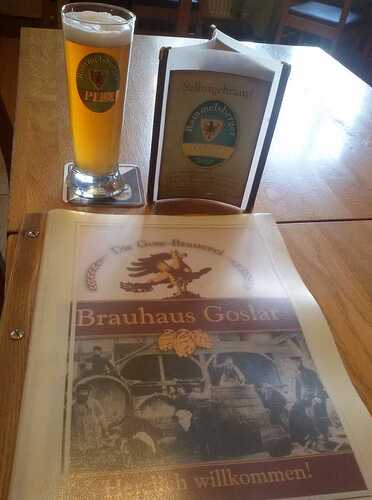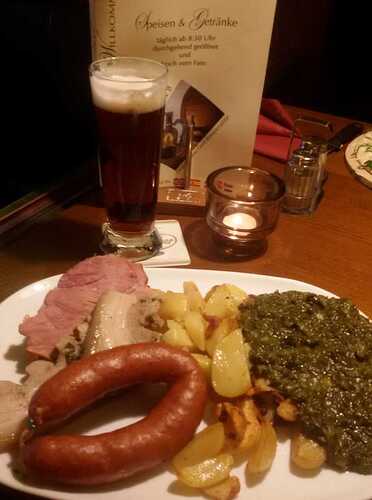Gose is a loved beer style, especially by those following the hype. Gose is indeed a traditional style which dates back to Middle Age, long before Reinheitsgebot and is not a style that requires lime, gooseberries, blackcurrant, black salt and other strange ingredients.
Outside German borders, not everyone knows that Gose is not originally from Lepizig, even thought the renaissance of the style in the 80’s comes from Gosenschenke “Ohne Bedenken”.
Gose is the namesgiver of the city of Goslar, in Lower Saxony. Gose + lar = Warehouse at the Gose. Gose is the name of a small stream of just 7,5 km, that flows into the Abzucht, another small stream flowing under the Imperial Palace of the city of Goslar. The water of the Gose was deviated already in Middle Age to supply the inhabitants of Goslar with fresh, healthy tap water. The same water was used by the almost 100 breweries in town back at the time to brew this top fermented special beer. Actually, in the past the beer was produced with the spontaneous fermentation method. Still today, the water of Gose is used to produce the local beer. The stream flows hidden in the underground and only a small street reminds us of the presence of this “divine” source of water: An der Gose .
The town itself is worth a visit for sure, being listed under UNESCO World Heritage, but for us beerhunters could be a nice destination to discover how the style is and how different it is from the Gose we drink everyday. Actually, there is not only Gose in Goslar, I managed to try different styles during my 3 days stay.
I started my tour at the Altstadt Cafè with some traditional Pils and Dunkel from Alternauer Brauerei.
The second day I discovered by chance a vegan bistro which serves
Neunspringer Whisky Ale and Neunspringer Whisky Stout from a local brewery.
The evening I went to Die Worthmühle, a traditional restaurant which serves its own Gose. This one resembles to the one “exported” in Leipzig, but without the salty touch that we all know.
The day after I paid a visit to Brauhaus Goslar, the local brewery which opened in 2004. I already had their Gose Hell in Berlin, so I tried the
Goslarer Gose Dunkel, the Rammelsberger Pils and the saisonal beer of the period: the tasty Brauhaus Goslar Altbier.
On my last day, before leaving, I had lunch at Wirtshaus Die Butterhanne, which is a famous restaurant which serves 3 homebeers: Butterhanne Gose Gold, Butterhanne Gose Dunkel and Butterhanne Barbarossa, brewed by Alternauer Brauerei just for them. This one overcame my expectations (previous reviews were not so enthusiastic). The Gose Hell is the best beer I had during this trip. It tastes like a witbier actually, but as far as I understood, this is how the traditional Gose from Goslar should taste.
In case that was not enough, the local Rewe had a nice selection of macrocraft available in the types of Brewdog, Mikkeller, Duvel and German breweries like Propeller, Ratsherrn, Insel Brauerei, Riedenburger.
To make a long story short, shall you plan to visit Germany and want to make a stop on the way from Düsseldorf to Berlin, you can consider Goslar and enjoy some fresh and good traditional Gose.














